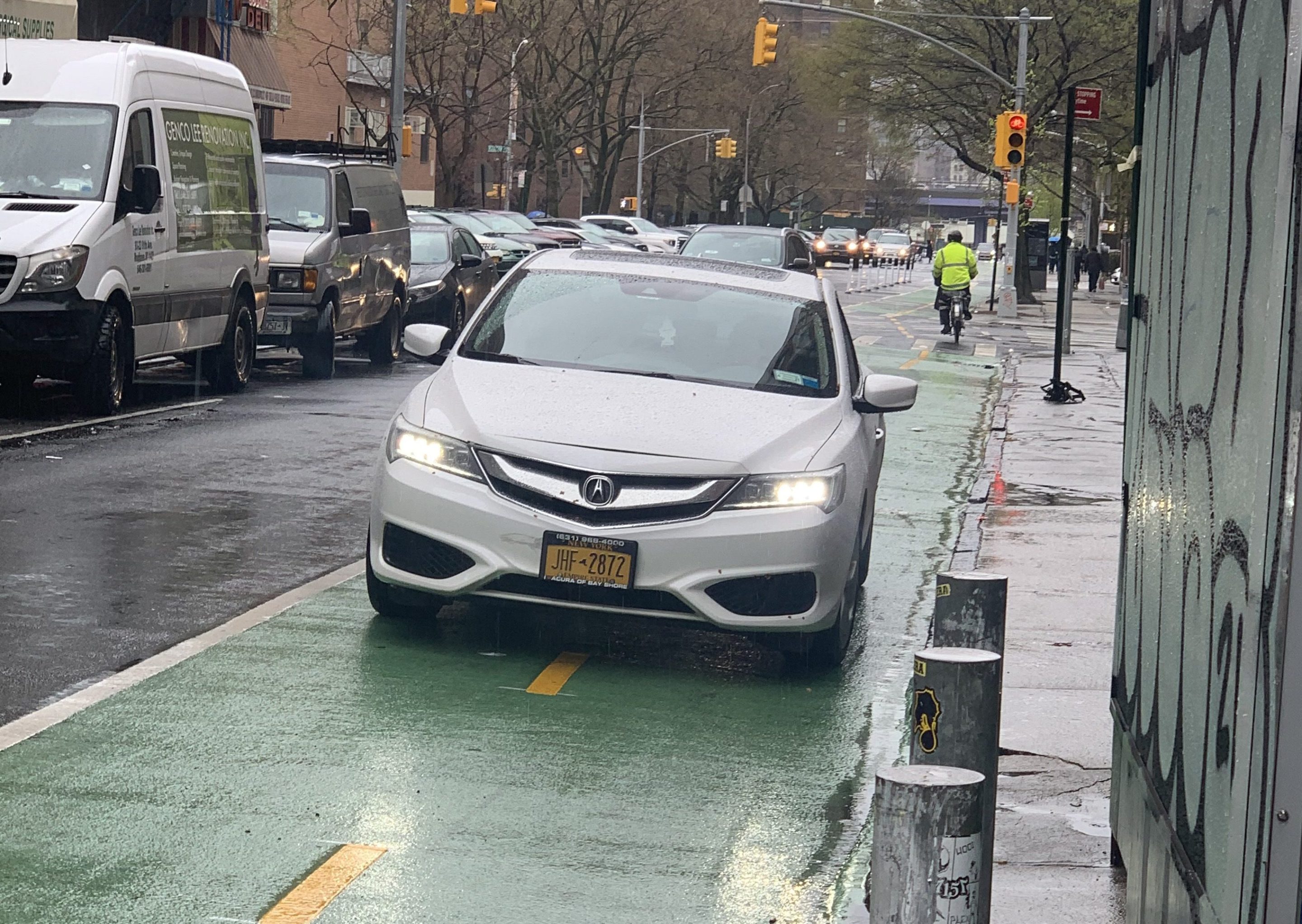This transportation agency needs a lesson in transportation.
Members of a lower Manhattan community board on Tuesday night sent the Department of Transportation back to the drawing board after arguing that its plan to relieve congestion around the streets leading up to the Williamsburg Bridge will actually lead to worse traffic, making the car-choked area even more unsafe for pedestrians and cyclists.
Community Board 3’s Transportation, Public Safety, Sanitation and Environment Committee unanimously rejected a DOT plan to restore a lane of car traffic on Norfolk Street — expanding it from one to two — in order to make it the primary access point to the East River span, schooling the transportation agency on a lesson in induced demand — the phenomenon that asserts the more space you give to cars, the more will come.
The DOT pitched the plan as a way to help mitigate car congestion on Clinton Street — the main north-south route between the East River and the Williamsburg Bridge — by banning drivers from turning right from Grand Street onto Clinton Street, which they say would eliminate a pinch point and some spill back that fuels the aggression of angry, inpatient drivers.
But the agency's efforts to appease drivers will bring more of them to the area.
Currently, according to DOT, roughly 760 cars per day traverse Clinton Street between Grand and Delancey streets, and about 370 use Norfolk Street between Broome and Delancey streets. But by adding a lane to Norfolk Street, the number of cars on Clinton Street will decrease to 545 daily, but increase on Norfolk Street to 735 per day. DOT says the change will help decrease travel times on Grand Street by about a minute and a half, yet increase travel times on Houston Street by about half a minute.
Committee Vice-Chair Michelle Kuppersmith said the massive increase in traffic on Norfolk Street — and a total area increase of 13 percent — was not acceptable.
“Making the route smoother will mean more cars,” said Kuppersmith during the virtual meeting. “I don’t think we should be encouraging more cars from coming here.”
A rep for DOT told the board that the change will bring Clinton Street to a “normal” level of traffic, but Kuppersmith called it an "If-you-build-it-they-will-come situation” A rep for DOT conceded that indeed it was, but claimed that Norfolk has the capacity to handle the added cars. And moving cars around the city efficiently for them is central to DOT's stated mission.
“Because this plan is more efficient in moving traffic, more traffic will be drawn to the route. It’s still expected that Norfolk will be able to handle all this vehicle traffic once it’s up to two lanes,” said DOT’s Carl Sundstrom.
Sundstrom admitted last time, and again reiterated this week, that the issue of basically, just too many damn cars on the road, is not localized to the area surrounding the Williamsburg Bridge, but the entire city.
“We have a regional traffic problem that we don’t want on local streets. And when we make changes, apps direct drivers based on the quickest travel times. So we need a larger solution,” he said.
But none has been proposed.
And other board members like Kuppersmith were dubious that a mere additional lane on what's already a nightmare street will do anything but "kick the can down the road," especially in a neighborhood with so much ongoing residential development.
“I would love for it to be safer at all intersections, but I’m uncomfortable about pushing a problem somewhere else,” said David Crane, the committee’s interim chair.
Kuppersmith shared a video during the meeting of the total chaos already on Norfolk Street, with traffic nearly at a standstill, drivers going through the red light, and inching through the crosswalk as pedestrians try to cross.
“That intersection of Norfolk and Broome is already bad. And there’s about to be so many more people here,” she said.
The DOT says it’s also looking to add more Jersey barriers to the Clinton Street bike lane between Grand and Delancey Streets, and create loading zones to curb double-parking along the key route to the popular Williamsburg Bridge bike path. The bike lane is consistently blocked by cars and trucks, and the CB3 committee said it supports a fully protected bike lane there.
Since 2018 Nothing has changed 2022 on Clinton street w/t traffic. 🤦♀️This delivery truck doesn’t give a damn about respecting the bike lane so chaos /danger is created @GrandStreetDems @newdowntowndems @nyc311 @NYC_DOT pic.twitter.com/t1fSMga8DL
— Daisy Paez (@DaisyPaezLES) January 21, 2022
Another resident said that the city should be focused on improving traffic and travel times for the most vulnerable road users, like bus riders, not those in their own private cars. Giving the M14 bus a dedicated lane should be the priority, said Jeremy Sherber,
“Pushing traffic onto small streets is not appropriate, and it doesn’t get us to a place where we’re changing the dynamic of the problem,” said Sherber. “I don’t understand how we can talk through a traffic plan without that stuff being primary. Start prioritizing the bus and then figure out what to do with bridge traffic, feel a lot more important."
Other improvements to the area also include installing a traffic signal "some time this year" at the intersection of Clinton and Broome street, according to Sundstrom.
The proposal will now head to the full community board for a vote on Feb. 22.






